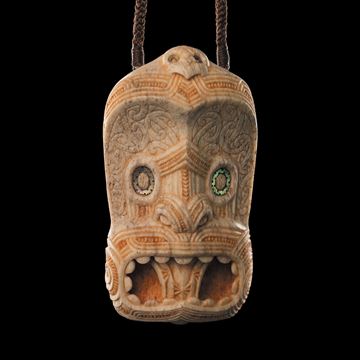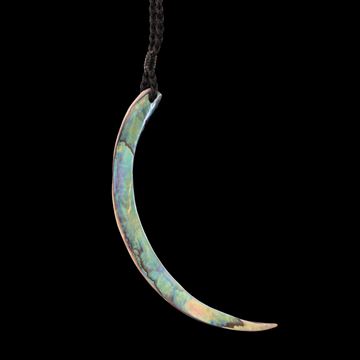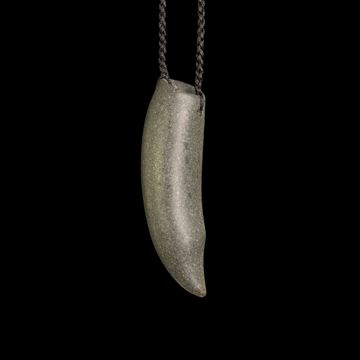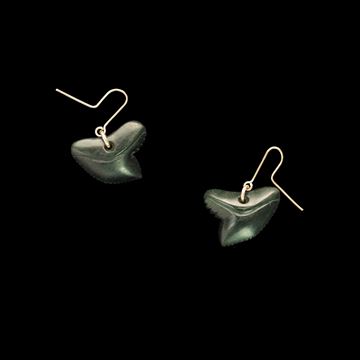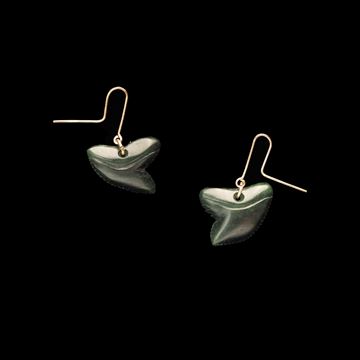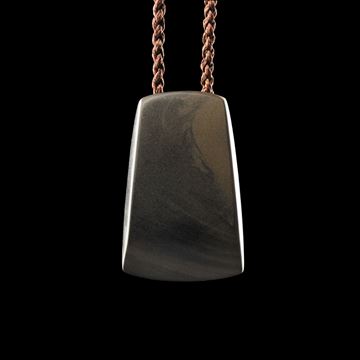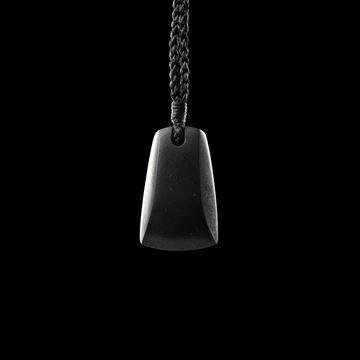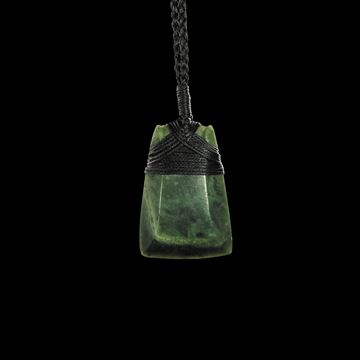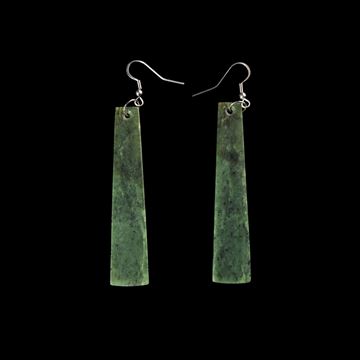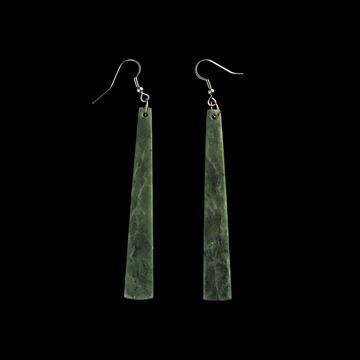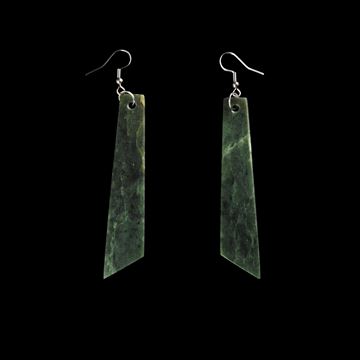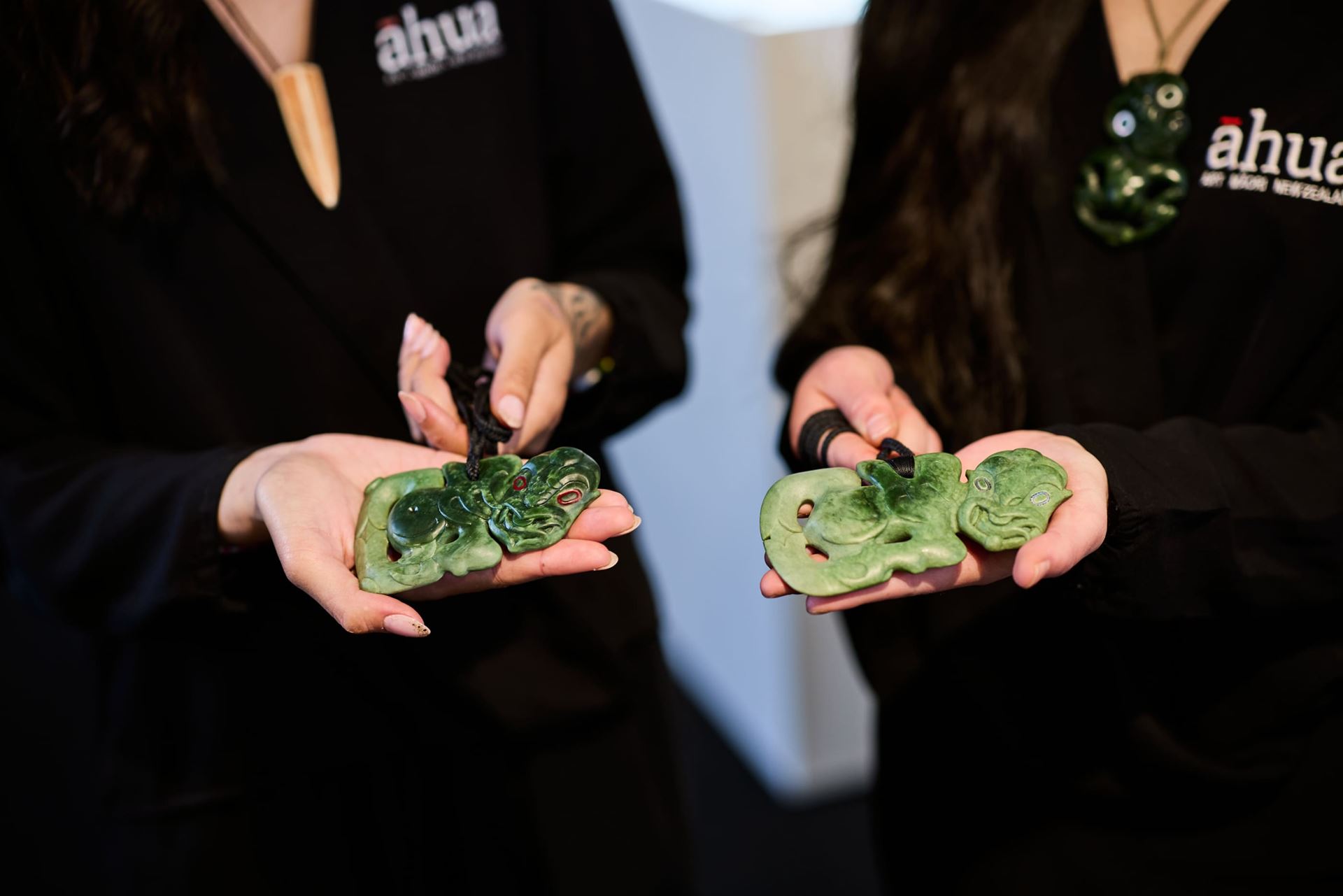
Te Takapū - National Stone & Bone Carving School
Select Subcategory
At Te Takapū, students learn the revered tradition of carving pounamu (Nephrite-Jade/Greenstone), bone and stone.
The school opened on 5 October 2009, expanding on NZMACI’s commitment to maintaining, developing and promoting the arts, crafts and culture of iwi Māori (Māori tribes) as mandated by the New Zealand Maori Arts and Crafts Institute Act (1963) (History).
The school was first led by Lewis Gardiner who is a well-regarded pounamu artist of his generation.
Stacy Gordine, a renowned artist from the East Coast of New Zealand – and uri of Hone Te Kauru and Pine Taiapa – now leads the programme and is shaping the direction of the wānanga into the future.
Would you like something custom made especially for you? Commission a piece here
Koruru - 6809HW
In Māori carving there are three predominant designs for heads: the ‘wheku’ with the long eyes; and the ‘ruru’, which also has round eyes but with a point at the top. The different designs were used by carvers to illustrate the character of the subject they were carving.
Koruru are frequently found fitted to the gable of a whare whakairo (carved meetinghouse) as a representation of the tribe’s eponymous ancestor.
Material: Parāoa (Whalebone)
Measurements: 102mm x 58mm x 27mm
$3,200.00
Autui Paua Shell - 5632KC
Autui were customarily used as a pin for fastening cloaks and may be made from bone, stone, wood or shell. They may also have been worn through the ear as an earring or around the neck as a pendant. Autui are still commonly worn as pendants and earrings and as with most Māori personal adornments, are often passed down generationally.
Material: Paua Shell
Measurements: 118mm x 15mm
$290.00
Hei Niho - 5397KC
Shark teeth were highly sought after to wear as a symbol of prestige for personal adornment. They were reflective of the mana of the shark itself.
Material: Onewa (NZ Greywacke)
Measurements: 73mm x 21mm
$310.00
Tiger Shark Earrings - 4543IA
Shark teeth were highly sought after to wear as a symbol of prestige for personal adornment. They were reflective of the mana of the shark itself.
Material: Pounamu (Kawakawa)
Measurements: 12mm x 25mm x 6mm
$390.00
Tiger Shark Earrings - 4544IA
Shark teeth were highly sought after to wear as a symbol of prestige for personal adornment. They were reflective of the mana of the shark itself.
Material: Pounamu (Kawakawa)
Measurements: 12mm x 25mm x 6mm
$390.00
Toki - 5520IA
The toki pendent is based on the form of the carving chisel used in whakairo (Māori carving).
Material: Ōnewa (Greywacke)
Measurements: 65mm x 31mm 10mm
$370.00
Toki - 5522IA
The toki pendent is based on the form of the carving chisel used in whakairo (Māori carving).
Material: Punakitere
Measurements: 38mm x 24mm x 7mm
$320.00
Toki - 6840HW
The toki pendent is based on the form of the carving chisel used in whakairo (Māori carving).
Material: Pounamu (Kawakawa)
Measurements: 45mm x 30mm
$490.00
Toki Earrings - 6223RH
Toki earrings (or drop earrings) are designed to suspend from the bottom of the earlobes. The length varies from a centimetre or two, all the way to brushing the wearer's shoulders.
Material: Pounamu (Kawakawa)
Measurements: 68mm x 15mm x 2mm
$390.00
Toki Earrings - 6224RH
Toki earrings (or drop earrings) are designed to suspend from the bottom of the earlobes. The length varies from a centimetre or two, all the way to brushing the wearer's shoulders.
Material: Pounamu (Kawakawa)
Measurements: 73mm x 11mm x 2mm
$380.00
Toki Earrings - 6229RH
Toki earrings (or drop earrings) are designed to suspend from the bottom of the earlobes. The length varies from a centimetre or two, all the way to brushing the wearer's shoulders.
Material: Pounamu (Kawakawa)
Measurements: 71mm x 15mm x 2mm
$390.00

